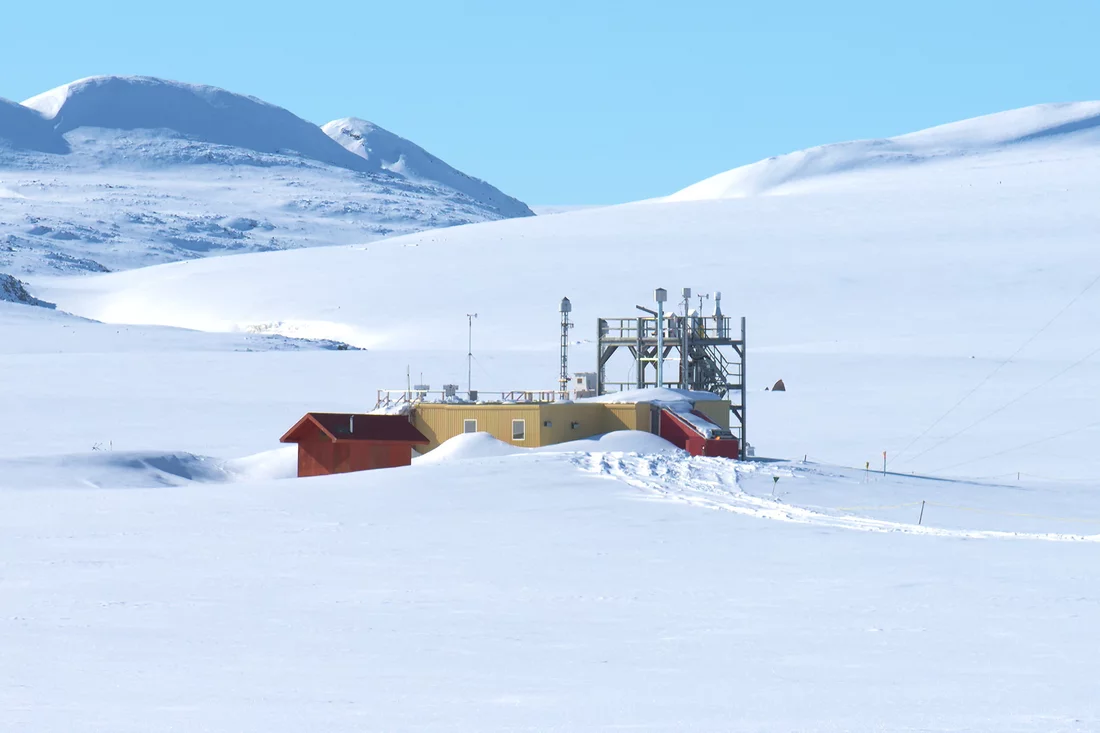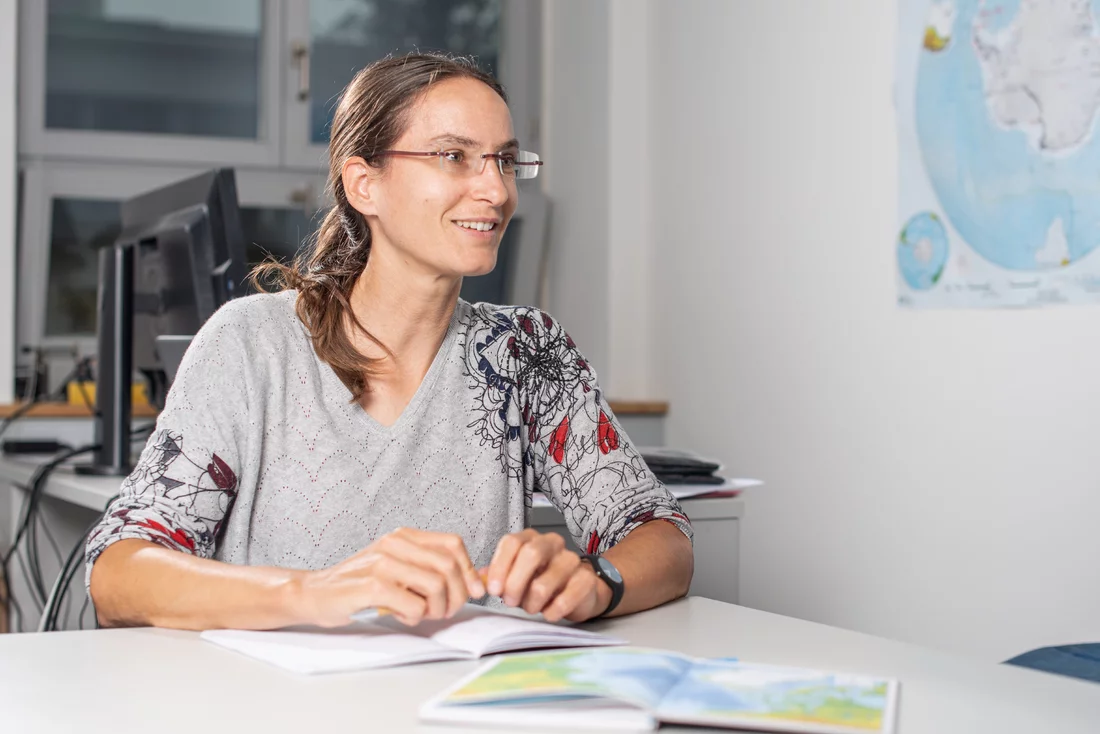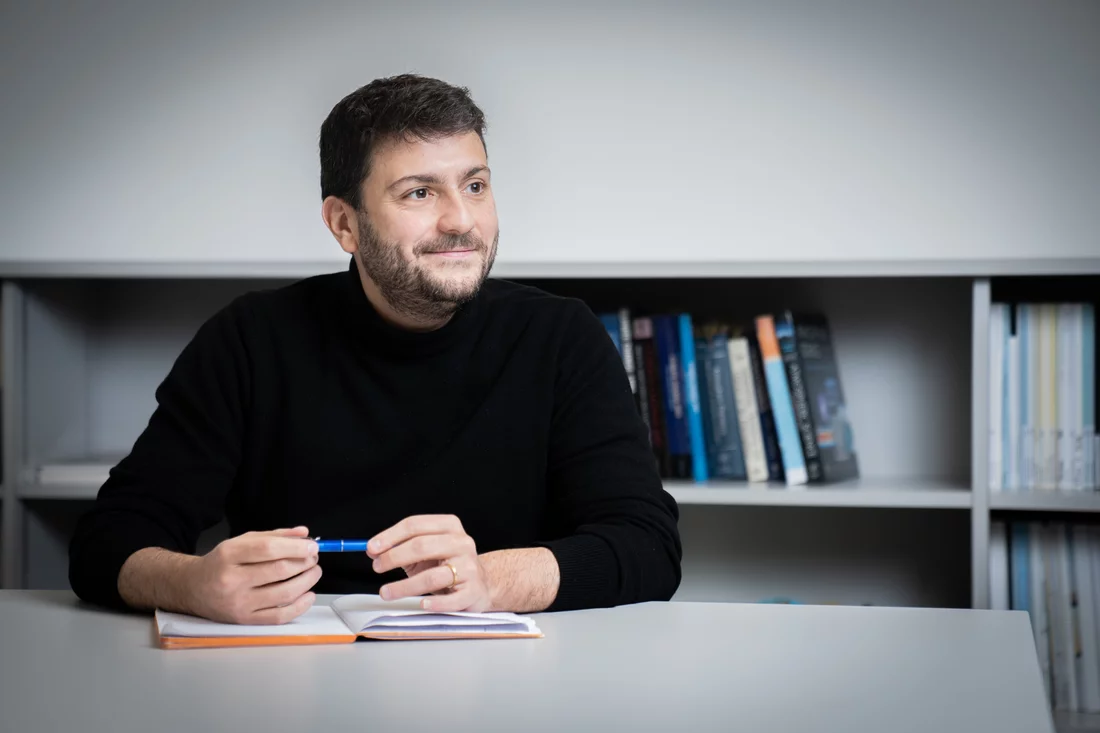Scientists at EPFL and the Paul Scherrer Institute PSI have studied the chemical composition and origin – whether natural or anthropogenic – of aerosols in a region spanning from Russia to Canada. Their findings provide unique insights for helping researchers better understand climate change in the Arctic and design effective pollution-mitigation measures. The work was made possible thanks to the joint effort of scientists from three continents.
The tiny particles suspended in the air known as aerosols play an important role in heating and cooling our planet, but their effects still aren’t fully understood. The particles can occur naturally, such as from volcanoes, forests and oceans, or be produced by human activity, such as fossil-fuel combustion and industrial manufacturing. They interact with solar radiation, either reflecting it back out into space and lowering the Earth’s temperature, or absorbing it and raising the temperature. They are also essential for the formation of clouds, which similarly play a role in cooling off or warming up the planet by reflecting solar radiation out into space or re-emitting terrestrial radiation back down to the Earth. Cloud formation in the Arctic is particularly sensitive to aerosols.
To gain deeper insight into these mechanisms, scientists at EPFL’s Extreme Environments Research Laboratory, headed by Julia Schmale, and the PSI’s Laboratory of Atmospheric Chemistry, whose head is Imad El Haddad, analyzed samples taken from eight research stations across the Arctic over several years. The Arctic is a crucial region for understanding climate change because the temperature there is rising two to three times faster than the rest of the planet. "If we know what kind of aerosols exist in different areas and at different times of year, and what the origin and composition of those aerosols are, we will have a better grasp of how they contribute to climate change," says Schmale. "That will also help us design more targeted measures to reduce pollution." The study was led by Vaios Moschos as part of his PhD thesis, supervised jointly by Schmale and El Haddad.
Anthropogenic in the winter and natural in the summer
In a first study, the researchers looked specifically at organic aerosols. Scientists still have little data on these aerosols even though they make up nearly 50% of total particulate matter. The researchers in this study analyzed the chemical composition of samples taken in the Arctic and found that, in the winter, most of those aerosols come from human activity. They attribute this to the Arctic haze that occurs each year when emissions from oil extraction and mining operations in North America, Eastern Europe and Russia are carried to the Arctic and trapped there during the winter.
On the other hand, the study found that most organic aerosols in the summer come from natural sources. That’s because the transport of anthropogenic aerosols from mid-latitudes to the Arctic is diminished during the warmer months, and the high latitude emission rate of biogenic aerosols or their precursors rises. "We didn’t expect to see so much naturally occurring organic aerosols," says Schmale. "These particles come from boreal forests as well as phytoplankton, a micro-organism that lives in oceans. Here we might see a consequence of global warming in the future – as forests expand northwards and the permafrost thaws more organic molecules can be released from land, and as sea ice retreats, more open ocean leaves space for microbial emissions."
Mitigation is now possible
In another study, the EPFL and PSI scientists used the same samples but analyzed the composition and origin of all the aerosols, both organic and inorganic. They found that the inorganic aerosols included black carbon, sulfate and sea salt; black carbon is of particular concern to the scientific community because it absorbs solar radiation and contributes to global warming. "We knew that black carbon emissions were high in regions with oil and gas extraction facilities, but we didn’t have collocated pan-Arctic measurements to understand how large their circle of influence is," says Schmale. "Thanks to the data collected in this study, we were able to map black carbon concentrations and origins in each Arctic region throughout the year and recommend the most appropriate measures to take."
The scientists were able to perform the studies thanks to a unique joint effort bringing together scientists from Canada, Denmark, Finland, France, Germany, Greece, India, Italy, Norway, Russia, Slovenia and the US. The eight research stations at which samples were collected (see list below) are run by research groups from various countries. The samples were analyzed at the two labs in Switzerland. El Haddad explains: "Analyzing organic aerosols requires mass spectrometers, which are expensive, sophisticated instruments, along with trained experts. That’s one reason why we still have little data from the Arctic on this subject. Our lab is at the forefront of research on organic aerosols and their origin."
Samples were collected at the following research stations:
- Alert, Canada
- Baranova, Russia
- Gruvebadet, Norway
- Pallas, Finland
- Tiksi, Russia
- Utqiagvik, USA
- Villum, Greenland
- Zeppelin, Norway
This research has received funding from:
- The European Union's Horizon 2020 Framework Programme 231 via the ERA-PLANET (The European Network for observing our changing Planet) project iCUPE 232 (Integrative and Comprehensive Understanding on Polar Environments) under grant agreement No. 233 689443
- The Swiss State Secretariat for Education, Research and Innovation (SERI; contract No. 234 15.0159-1)
- The SNSF Scientific Exchanges grant “Source apportionment of Russian Arctic aerosols,” 237 (SARAA; No. 187566)
Text: Based on a press release by EPFL
Further information
- Aerosol formation in clouds – A media release from 24 March 2021
- Iodic acid influences cloud formation at the North Pole – A text from 1 October 2020
Contact
Dr. Julia Schmale
Head of the Extreme Environments Research Laboratory
School of Architecture, Civil and Environmental Engineering (ENAC)
École polytechnique fédérale de Lausanne Valais Wallis, Rue de l'Industrie 17, Case postale 440, 1951 Sion, Switzerland
Telephone: +41 21 695 82 69, e-mail: julia.schmale@epfl.ch [German, English, French]
Dr. Imad El Haddad
Acting Head of the Laboratory for Atmospheric Chemistry,
Paul Scherrer Institute, Forschungsstrasse 111, 5232 Villigen PSI, Switzerland
Telephone: +41 56 310 29 95, e-mail: imad.el-haddad@psi.ch [English]
Original Publications
Equal abundance of summertime natural and wintertime anthropogenic Arctic organic aerosols
V. Moschos, K. Dzepina, D. Bhattu, H. Lamkaddam, R. Casotto, K. R. Daellenbach, F. Canonaco, W. Aas, S. Becagli, G. Calzolai, K. Eleftheriadis, C. E. Moffett, J. Schnelle-Kreis, M. Severi, S. Sharma, H. Skov, M. Vestenius, W. Zhang, H. Hakola, H. Hellen, L. Huang, J. L. Jaffrezo, A. Massling, J. Nojgaard, T. Petaja, O. Popovicheva, R. J. Sheesley, R. Traversi, K. E. Yttri, J. Schmale, A. S. H. Prevot, U. Baltensperger, I. El Haddad
Nature Geoscience, 28. February 2022 (online)
DOI: 10.1038/s41561-021-00891-1
Elucidating the present-day chemical composition, seasonality and source regions of climate-relevant aerosols across the Arctic land surface
V. Moschos, J. K. Schmale, W. Aas, S. Becagli, G. Calzolai, K. Eleftheriadis, C. E. Moffett, J. Schnelle-Kreis, M. Severi, S. Sharma, H. Skov, M. Vestenius, W. Zhang, H. Hakola, H. Hellen, L. Huang, J. L. Jaffrezo, A. Massling, J. Nojgaard, T. Petaja, O. Popovicheva, R. J. Sheesley, R. Traversi, K. E. Yttri, A. S. H. Prevot, U. Baltensperger, I. El Haddad
Environmental Research Letters, 28. February 2022 (online)
DOI: 10.1088/1748-9326/ac444b
Copyright
PSI provides image and/or video material free of charge for media coverage of the content of the above text. Use of this material for other purposes is not permitted. This also includes the transfer of the image and video material into databases as well as sale by third parties.



